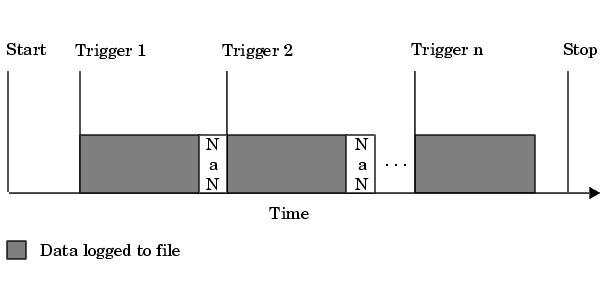

| Data Acquisition Toolbox |   |
Logging Information to Disk
While an analog input object is running, you can log this information to a disk file:
Logging information to disk provides a permanent record of your data acquisition session, and is an easy way to debug your application.
As shown below, you can think of the logged information as a stream of data and events.

The properties associated with logging information to a disk file are given below.
| Property Name |
Description |
LogFileName |
Specify the name of the disk file to which information is logged. |
Logging |
Indicate if data is being logged. |
LoggingMode |
Specify the destination for acquired data. |
LogToDiskMode |
Specify whether data, device object information, and hardware information is saved to one disk file or to multiple disk files. |
You can initiate logging by setting LoggingMode to Disk or Disk&Memory. A new log file is created each time you issue the start function, and each different analog input object must log information to a separate log file. Writing to disk is performed as soon as possible after the current data block is filled.
You can choose whether a log file is overwritten or if multiple log files are created with the LogToDiskMode property. If LogToDiskMode is Overwrite, the log file is overwritten. If LogToDiskMode is Index, new log files are created, each with an indexed name based on the value of LogFileName.
 | Saving Device Objects to a MAT-File | Specifying a Filename |  |